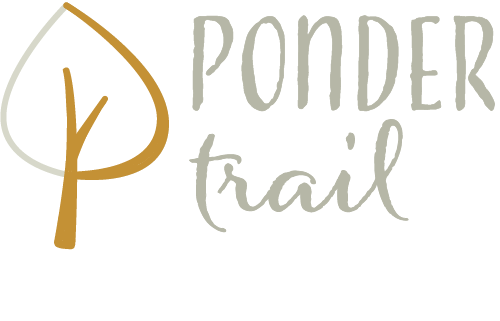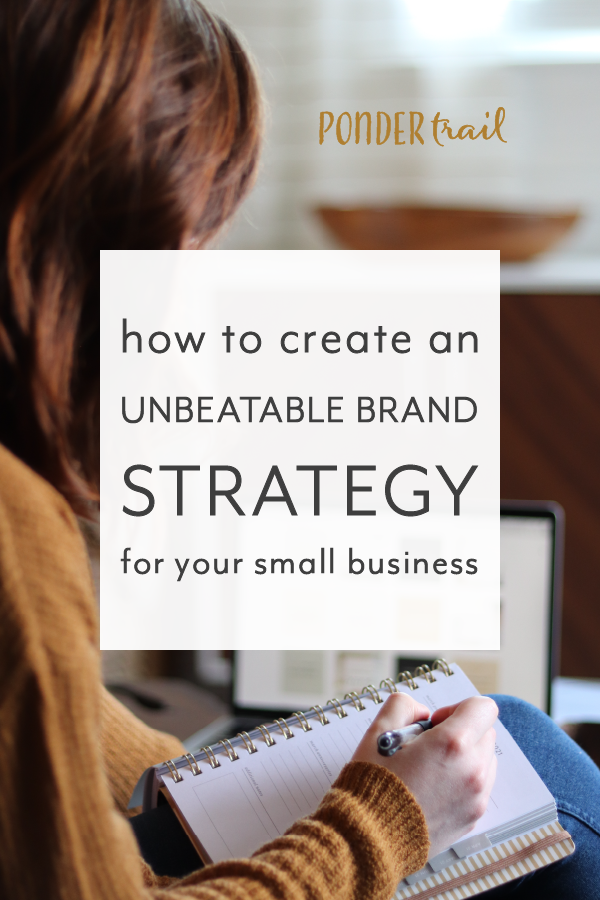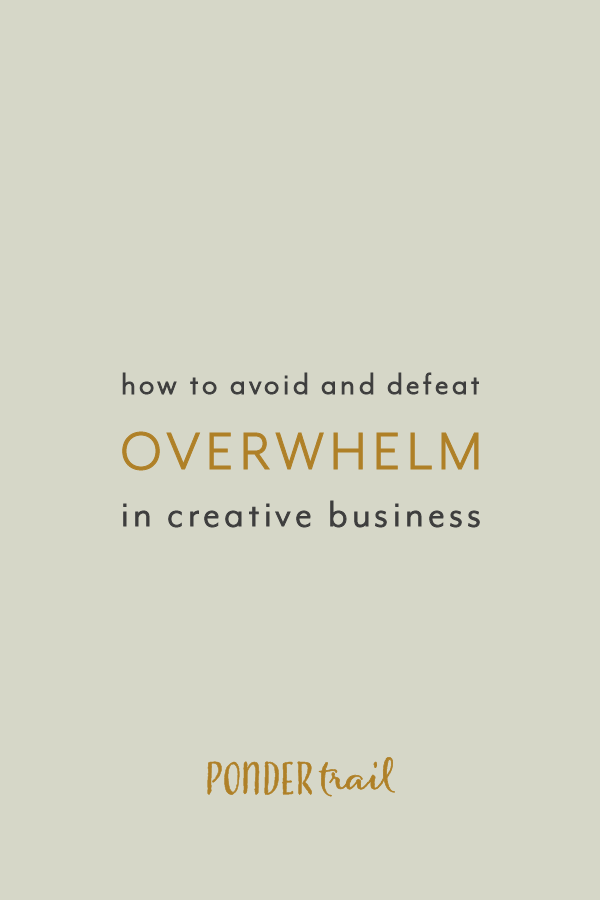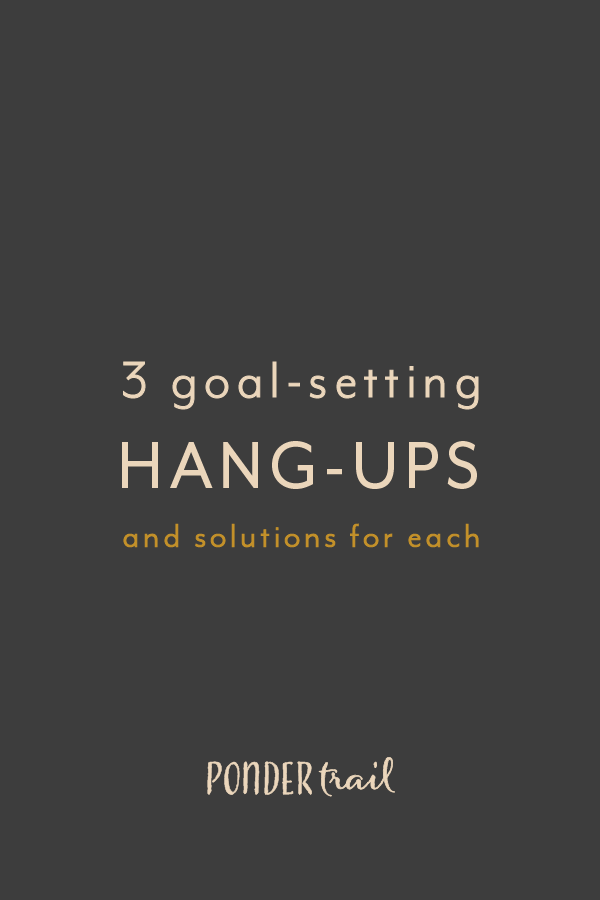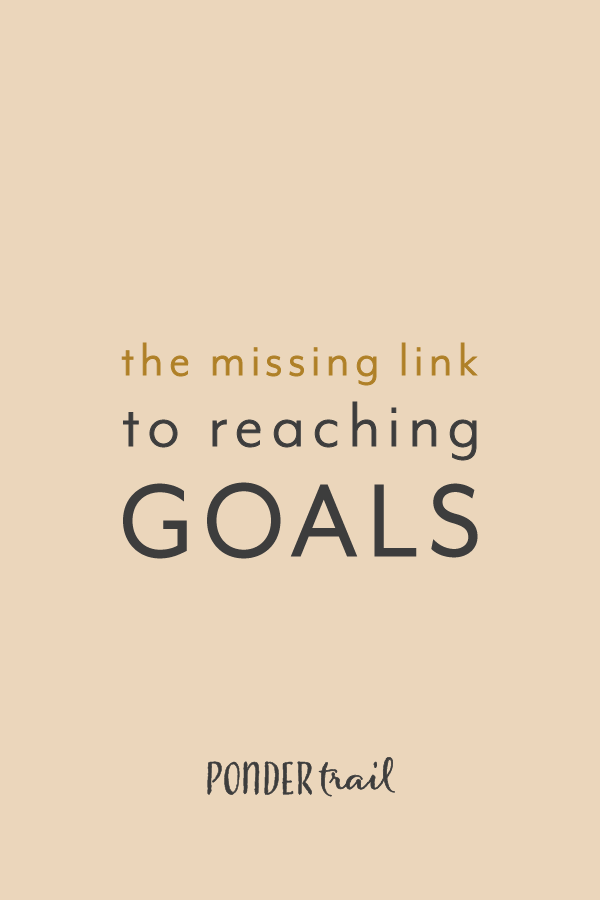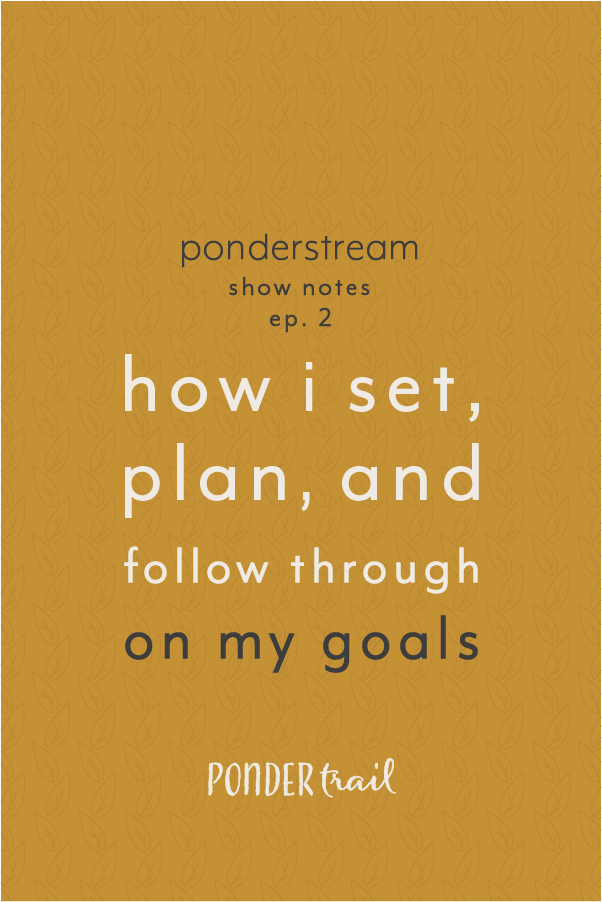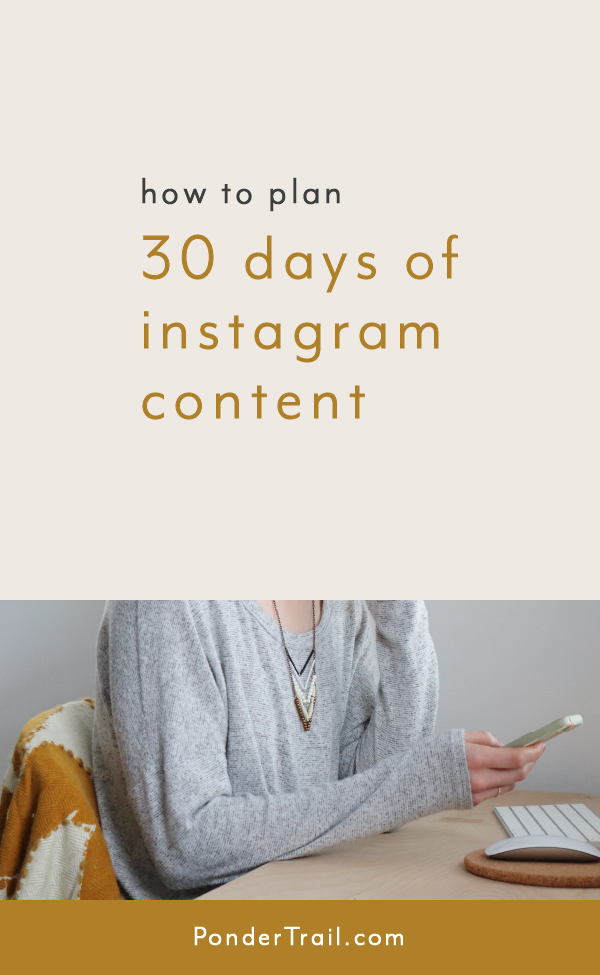Not Attracting Enough Customers or Clients? Your Blog Strategy Might be to Blame
I find the most difficult part of being a creative entrepreneur is managing the constant flow of new ideas. Everyday, I think of more and more possibilities and directions to explore for my business, and it can be quite a task to manage, analyze, and sort through them all.
The largest stream of ideas is usually for my blog content. There are so many things I want to share on my blog, but it often seems impossible to check each one off my never-ending list. Which posts should I write first? Which ones will be most strategic for my business? Which posts will be most helpful for my audience?
With a huge number of tentative posts, topics, and tips to create, it can be a bit overwhelming to figure out which blogs to write—especially while juggling other areas of business, such as client work, social media marketing, newsletter content, product development, and so on.
It takes a lot of time and energy to think through every blog post possibility, decide which ones to write each month, and map out titles into an editorial calendar.
In a panic, it can be easy select and write posts on a whim because we know creating content is key to growing a successful business. Gotta stay consistent. Gotta show up. Gotta build that SEO.
But this frantic approach leads to “idea clutter,” and it can quickly cause your business to crash and burn. Your posts are all over the place. They’re hard to write. They don’t grow your readership. They feel like a complete and utter waste.
And yet, you keep on blogging because you’re still hoping to strike gold one day.
But take a deep breath because today I have a simple solution to make blogging easy again. In this post, I’m going to show you how to cut the clutter, get to the point, and create blog posts that convert.
It’s time to whip your blog into shape so it can become a powerhouse for your business—instead of a burden.
Let’s begin!
When Your Blog is a Waste of Time
Blogging Takes Time
Time is precious. And when you run a creative business, it feels like there’s never enough. The funny thing is, it’s all-too easy to waste time as an entrepreneur. There are things to learn. Things to do. The list never ends.
But the last thing you want to do is waste time—especially when that time could, instead, yield fruitful results when implemented in a different way.
Blogging Can Grow Your Audience
Blogging is a critical area for online business because it’s a great way to attract your audience, grow your readership, and increase sales and bookings. I’ve seen the effects of blogging firsthand, and I can tell you that Ponder Trail would not exist without my blog.
In fact, I attribute every client and customer back to my blog because that’s how they learned about my offerings, my creative process, and my approach. My blog is also how I build trust with them since it demonstrates my expertise and provides articles about creative entrepreneurship to back up my services.
The Ponder Trail blog is the main place I share free, helpful content, and it’s also a key component of my website.
If I didn’t have my blog, I wouldn’t have content to share on social media, and I would struggle with ideas to write in my newsletter, too.
Brand Strategy is Key
I’ve spent hundreds of hours over the years creating my blog posts, and thanks to brand strategy, that blogging has paid off.
But without a careful strategy, my blog would have gotten me nowhere.
Imagine if all of that time and effort was had been a waste: I would have zero clients. Zero customers. And a whole lot of time down the drain.
If I hadn’t defined a clear specialization, a specific audience, or a niched offering to solve problems for them, my blog content would have been all over the place. It wouldn’t have attracted a cohesive audience, it would have confused people, and it would have run me ragged trying to write everything for everyone.
Instead, my blog has been the lifeline of my business because I’ve prioritized strategy from day one.
While it’s easier said than done, strategy is the secret for determining what blog post ideas lead to growth. A solid strategy (or lack thereof) will make or break the impact your blog has, guaranteed.
Strategizing is one of my favorite parts about running a creative business—maybe it’s because I’m a brand strategist and designer (or maybe it’s because it works). But I’ve outlined a few simple steps to getting your blog back on track today.
Because if you’ve gotten a little side tracked, gone down a rabbit trail, or gotten buried under all of the topics you’re passionate about, it’s time to refocus your blog and reap the benefits.
The Problem with Your Blog Posts
First, determine where your blog has gone wrong.
Idea Clutter
I often stumble on blogs plagued by what I like to call “idea clutter.” This is when a blog is trying to cram in too many ideas. The ideas might relate or fall under some sort of umbrella, but the topic is still way too general.
Getting trapped in this pitfall won’t lead to sustainable business growth, and it won’t result in new customers or clients either. So it’s a hang-up you’ll want to prevent or get out of.
For example, a lifestyle or personal development blog suffering from idea clutter might talk about everything related to self-improvement—from DIY projects, to home finances, to clean living, to healthy meals, to fashion inspiration, to journaling.
While all of these topics could be considered lifestyle-related content, there is no clearly defined niche or specialization. This makes it a hundred times harder to hone in on your ideal customer or client, to resonate with them through your writing, and to point them to your paid products or services. And it makes it a thousand times harder to grow your audience and convert blog views into sales.
One blog post might hit home with a reader who’s looking for advice on how to budget or save money. Another reader might resonate with your post about creating a healthy home. And another reader might get a lot of inspiration from your DIY meal kits post. But do you see the problem?
Each of those readers falls into a different audience with different needs, wants, or problems. And you can’t offer solutions for everyone.
Yes, it’s possible that someone might enjoy several of those topics, but they’ll most likely be bummed when they check out the rest of your blog posts only to find a miscellany of various topics and only a few blogs that interest them.
So if your posts—or your entire brand for that matter—are suffering from idea clutter, it’s time to go back to the drawing board and create a strategy that will take your business places.
How to Turn Your Blog Post into a Growth Generator for Your Business
Write for one audience: your defined customers or clients
Your audience is coming to your blog for something specific. So you want to position yourself as an expert in your specific niche. This will help you specialize and stand out as a go-to resource—rather than branding yourself as a random blog with only one post of interest for everyone.
Your goal is to write each blog post around your niche so that every potential buyer who lands on your website will have a large collection of posts to explore. This will help them get to know you, your brand, your offerings, and (most importantly) how you can serve them.
All of your blog posts should be written with your dream audience in mind so they will find your posts intriguing and helpful. That will ensure they give your posts a read, love what they see, sign up for more free content through your newsletter, and look for more value from your paid services or products.
When you implement clever brand strategy, all of your content—both free and paid—will line up and fit together like a puzzle. This creates your seamless marketing funnel and turns your blog posts into powerhouses for your business.
1 | Hone in on your target audience
To pinpoint your audience, identify who would be likely to buy or book your offerings.
To figure this out, it’s often helpful to focus on the problems you solve through your products and services. Identify the needs, wants, and hang-ups that your target customers or clients have. Then, zero in on your audience by using those strategic details.
I recommend this audience-defining method to most of my clients since it helps determine who will purchase your products or book your services, and it gives insights on how to attract and connect with them.
While you can create an audience “avatar” or sketch by listing character attributes like age, favorite color, or income, it doesn’t always help you figure out who your people are.
So if the standard audience persona exercise isn’t working for you, I suggest you try this technique. You can always develop more personality traits and demographics for your audience afterwards, if you like. But it’s helpful to start with who will directly relate to your business.
Think about what value you provide through your paid offerings. Then, identify the people who would want it. This is your target market, and it’s who you will write all of your future blog posts for. Any content you publish should be created with them in mind in order to ensure your blog benefits your business.
Hint: I’ve found that many of my coaching clients struggle with pinpointing their audience. It’s easy to default to the avatar method to define your ideal client or customer, but this step often proves to be a challenge.
Creative Coaching: The method you use for defining your target market depends on your business, and it’s another key part of building your brand strategy. If you’d like help in this area, I would love to chat! Take a look at my coaching service here to get started.
2 | Hone in on your strategic blog topics
Select 1-5 specific topics that relate to your audience. These should be themes your target market is looking for or subject matter they will resonate with right away. The categories you choose should correlate with your brand’s niche, too, to ensure they’ll point to your paid offerings and generate income for your business. This will prevent you from pouring time into dead-end blog posts.
Once you identify your topics, brainstorm blog ideas that will catch your audience’s attention and attract them to your website. This process is called content marketing, and it’s one of the most powerful ways to grow your business.
Aim to solve bits and pieces of their problems through your blog. Each post should be focused, full of value, and include a specific call-to-action at the end so readers will know exactly how to implement your content.
Don’t try to cover too much in each post; keep it simple and to the point. Instead of cramming everything into one article, you can save those other idea for a future post. You can create a series or split bigger concepts into smaller, bite-sized posts. This also ensures you’ll have a steady stream of content to create.
When Your Blog is a Powerful Tool
Once you define your audience and topics, it’s time to put your ideas out into the world by consistency writing and publishing blog posts.
When you use these guidelines to produce your content, your time will not be wasted.
You’ll have a clear focus for the content to create, which will get rid of decision fatigue and help you get right to work. Your blog posts will attract one consistent audience, which will generate genuine growth. And you will begin to demonstrate your expertise, which will establish your credibility and build trust with your audience.
All of this will cultivate an authentic relationship with your dream customers and clients, and it will help your business take off and flourish.
Save Time, and Skip the Guesswork
Brand Strategy Coaching for Creative Entrepreneurs
If your blog and content could use some sprucing, and if you’d like step-by-step guidance to ensure your time is not wasted on trying to figure it all out, I would love to help you!
Take a look at my brand strategy package here to see what my one-on-one creative coaching looks like. It’s custom-tailored to your specific business, personality, and needs to equip you to start, grow, and scale your online brand.
So whether you’re a blogging newbie or a seasoned blogger ready for an overhaul, brand strategy coaching can help you overcome the roadblocks and make progress towards your goals.
From there, you can contact me to book your free consultation call to see how I can serve your creative business. I’m excited to hear from you!
Now it’s your turn. How would you describe the current state of your blog? Is it a powerful tool for your business? Or is it draining your time and energy with little to show for it? Let me know in the comments.
